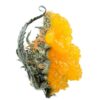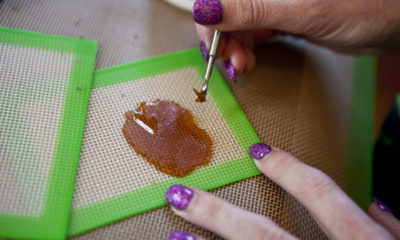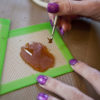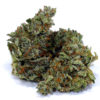
In The Magazine
The United States of Prohibition – History Set to Repeat Itself
By the time the 21st Amendment was ratified on Dec. 5, 1933, alcohol’s 14-year position as an illegal substance had wreaked substantial damage on the United States. The dry years had forced honest citizens into a life of lawlessness, creating an environment where working class men had to either join the bootleggers to support their families or live out the nightmare of watching them starve.
Prohibition coincided with The Great Depression, an economic collapse that set the country on course for disaster. Everyone, including Uncle Sam, was broke. The income tax imposed as a way to keep the federal government from leaning entirely on excise taxes was no longer feeding enough money into Washington D.C. to matter. But the alcohol industry was still booming nationwide as an illegal trade.
At the time that Franklin D. Roosevelt was going full-throttle into his “crusade to restore America” by pushing to lift the ban on booze, a movement that undoubtedly saved the nation from deeper despair, another government official was preparing to sell the nation a hefty-dose of Reefer Madness that would stifle the economic potential of the U.S. once again through a ban on marijuana.
Similar to the schemes that eventually led to the prohibition of alcohol, Harry Anslinger, the nation’s first drug czar, used his prejudice against “negroes, Hispanics, Filipinos, and entertainers” to unleash a deafening campaign that would convince the country that weed was a product of the devil. At the time, marijuana was not a substance that was understood by mainstream America, but with Anslinger threatening the fragile masculinity of rich white men, suggesting that weed would make their wives want to have lurid sex with the “darkies,” the population and, more importantly, the boys in Congress, started to take notice of the hellish scourge weed might be unleashing on the moral fiber of the United States.
Unlike the 100 years leading up to the U.S. ban on alcohol, however, there was absolutely no truth in the shocking accusations made against the cannabis plant. Anslinger and newspaper guru William Randolph Hearst, who was worried that hemp production might put him out of business, joined forces to concoct tales of stoned black men engaged in wild orgies with underage girls and others of violent, savage murders brought on by the grips of marijuana addiction. These pieces of yellow journalism consistently hit the pages of nearly 30 major newspapers across the nation, and the majority of the population swallowed these tall tales as gospel. It didn’t take long before Americans were convinced that weed was driving the stoned nation to the brink of sheer insanity.
Anslinger would eventually use this form of vile propaganda to bamboozle Congress into passing The Marihuana Tax Act of 1937, which made it illegal to possess or transfer cannabis by imposing an excise tax on the sale of hemp. It was the beginning of the drug war, even though no one really understood the monster for which this concept of criminalizing marijuana would eventually become. Within a decade, it was apparent that the aftermath of Anslinger’s bizarre vendetta against marijuana would set the tine for years to come.
In the 1950s, Congress enacted legislation to impose mandatory sentences against pot offenders that made a first-time possession charge punishable by up to 10 years in prison. Soon after, President Richard Nixon would conjure up a self-serving scam to declare a full-scale war against the plant and the people who used it.
When Congress passed the Controlled Substances Act in 1970, the consensus was that there wasn’t enough research available to permanently classify marijuana a Schedule I dangerous substance. A special commission, assembled under the supervision of Nixon, was then put in charge of digging up all of the despicable evidence they could to prove the herb was, in fact, a dangerous drug. To ensure he was going to be able to make a “goddamn strong statement about marijuana,” Nixon stiffly warned the Shafer Commission not to bring back any data that might go against the opinions of the administration or Congress. Nevertheless, the group, overseen by former Pennsylvania Governor and sworn prohibitionist Raymond Shafer, concluded that marijuana possession should no longer be considered a criminal offense. The sanctity of prohibition was in jeopardy, and Nixon was furious.
Although Tricky Dick had the power, in 1972, to remove marijuana from the Controlled Substances Act, allowing the country to capitalize on this great American cash crop as it did many, many years ago, he chose instead to launch a bogus war — a move that has led to millions of arrests for minor possession, an expenditure of a trillion dollars and a prison incarceration rate above that of any other nation.
Fast forward to 2015. While marijuana has proven in states like Colorado to be an economic salvation rather than a plague on civil society, there just isn’t the same kind of influence in Washington D.C. that there was in the time of the 18th Amendment to get Congress to make federal reforms.
But, make no mistake — history is working to repeat itself. The latest Gallup poll, which was released in October, reveals the greatest level of support for legalization in the U.S. since the organization first launched the survey in 1969. Fifty-eight percent of the population now believe the cannabis plant should be made legal nationwide. In time, history dictates that this opinion will become more prevalent in the nation’s capital, forcing a Congressional action on marijuana reform or, perhaps, a subtle but powerful reform by the hand of the next President of the United States.
Originally published in issue 18 of Cannabis Now. LEARN MORE
Will America ever legalize marijuana across the nation? Let us know what you think.




















